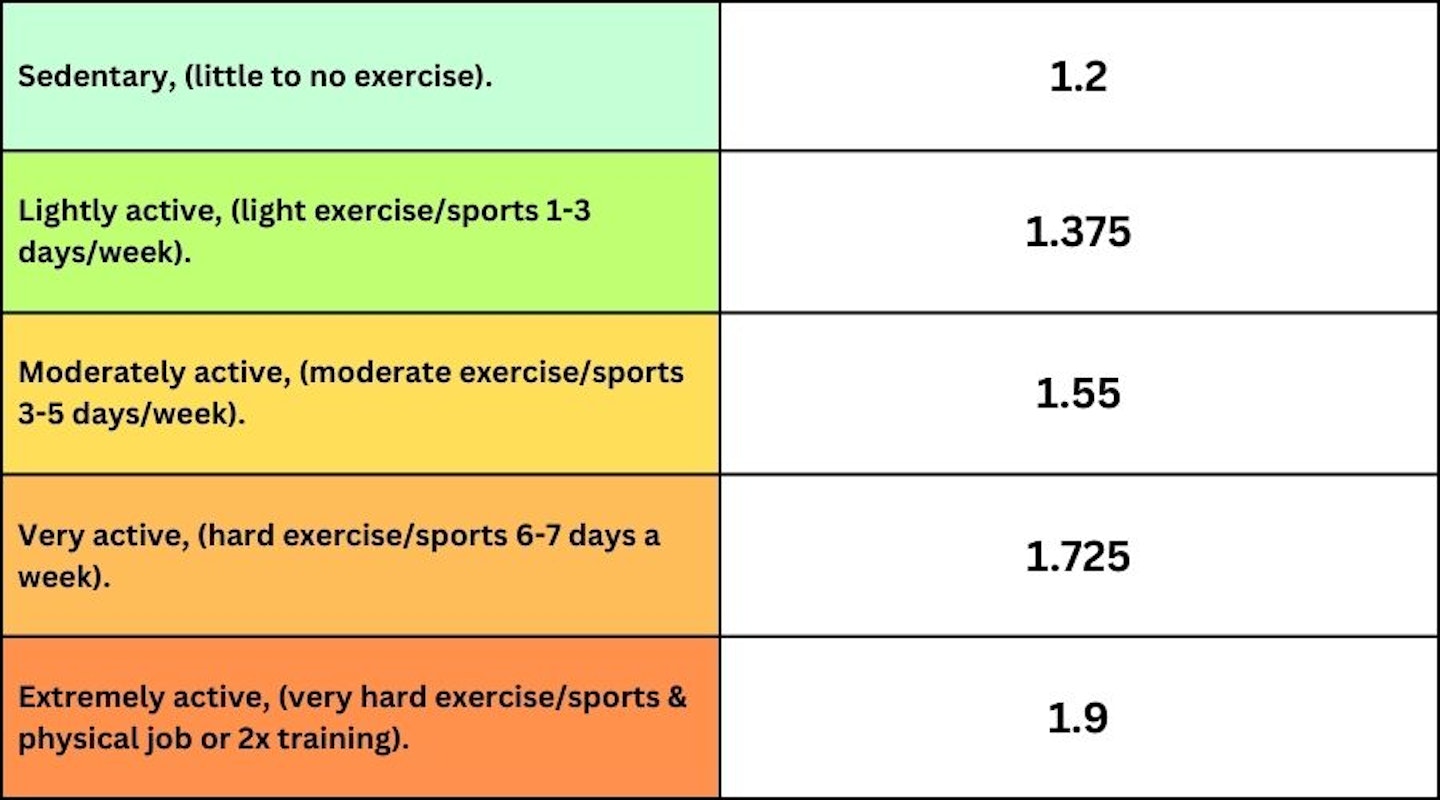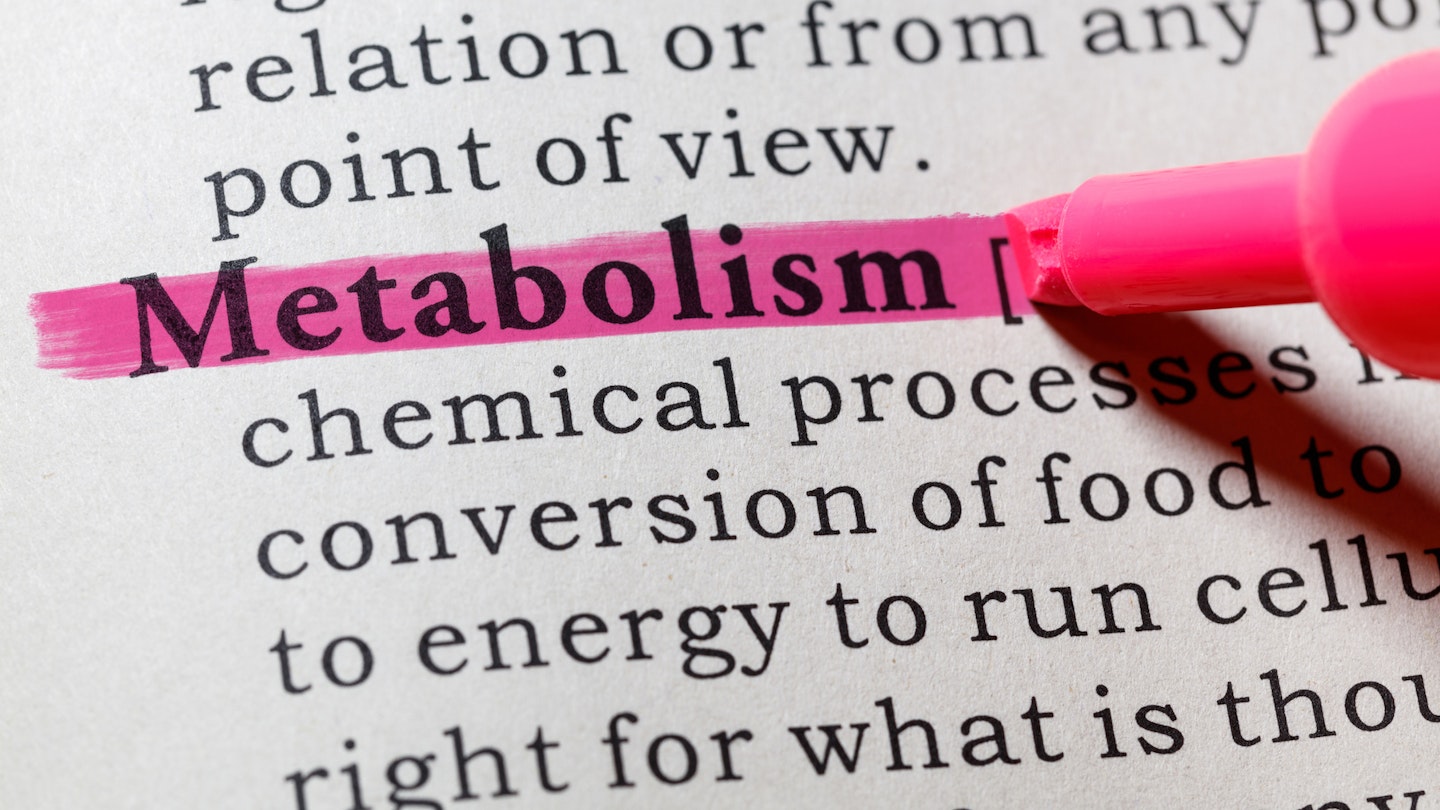In this article, industry expert and personal trainer Simon Diamond explores metabolism. The internet is full of myths and widespread misinformation around metabolism; this article deals in facts only, delving into understanding metabolism and guiding you on calculating your BMR, RMR and TDEE. It also highlights supplements, exercises and lifestyle changes that you can make to improve metabolism processes.
It explores signs indicating a healthy metabolism, key factors that can negatively affect metabolism, and effective strategies for optimising your metabolic health. Whether you’re just interested in helping your general health or are looking to optimise results from your resistance training program, keep reading.
Jump to:
Metabolism - What is it?
Metabolism is a set of processes that keep us alive. It’s like the body's engine - turning food into energy and building important things on a cellular level.
The two processes of the metabolism
The two metabolism processes are called anabolic and catabolic, each playing a vital but different role.
Anabolic, or anabolism, is like the builder in our body - it uses energy to create important and complex things like proteins and structures needed for our cells. This helps with growth, repairing tissue and keeping everything functioning. It’s crucial for keeping our body in a healthy shape.
Consider the catabolic process, or catabolism, as the opposite of anabolism. Catabolism is essential for the body's health, releasing stored energy from macronutrients, supporting cellular maintenance and repair, recycling nutrients and contributing to metabolic balance and stress adaptation.
The catabolic process plays a crucial role in weight management by utilising stored energy. However, like cortisol, catabolism, when heightened or prolonged, can lead to muscle breakdown. Factors such as insufficient protein and calorie intake, intense physical stress without proper recovery, or times of illness or injury can contribute to this muscle loss.
Both anabolism and catabolism are vital processes, with anabolism building and catabolism breaking down, ensuring our body functions optimally by generating energy for various cellular activities, such as producing adenosine triphosphate (ATP). ATP is the energy used at the cellular level.
Why knowing about your metabolism matters
Understanding metabolism is crucial for anyone embarking on a fitness and health journey.
Knowledge of metabolism allows individuals to make informed choices about nutrition, exercise, and overall well-being. A working understanding of metabolism empowers individuals to make sustainable lifestyle choices, promoting physical fitness and long-term health and well-being.
To get such an understanding, there are a few things you need to know about. These include metabolic rates - i.e. how many calories your body burns at rest and during exercise - and how to calculate yours, plus lifestyle factors that can positively or adversely affect metabolic speeds.
Below, we explore each of these topics.
Signs of a healthy metabolism

A healthy metabolism shows itself in several ways that contribute to your overall well-being. Some examples include:
- Steady energy levels with no sudden highs and crashes
- Stable weight that avoids fluctuations
- Regular and comfortable bowel movements
- Quality sleep
- Hunger and fullness aligning with meal times
- Stable body temperature
- Clear skin, healthy and strong hair and nails
- Positive response to exercise, promoting physical fitness and endurance
- Balanced hormones, such as insulin and thyroid
Beyond these physical signs, a well-functioning metabolism has broader lifestyle implications. People with an efficient metabolism often find it easier to stay active, with enhanced endurance and quicker recovery after exercise. This stamina encourages regular physical activity, which, in turn, supports metabolic health.
A robust metabolism also plays a role in mental and emotional well-being. Those with an efficient metabolic system report better stress management and an improved ability to navigate life's challenges. The stability in energy levels and mood associated with a balanced metabolism contributes to an overall sense of well-being and emotional balance.
Moreover, healthy metabolic function supports a positive body image and confidence. Individuals with a stable weight and optimal fat-to-muscle ratio are likelier to feel comfortable in their bodies, fostering a positive relationship with food and self-esteem. This, in turn, can influence other lifestyle choices, such as dietary habits and the pursuit of holistic well-being.
Furthermore, a healthy metabolism contributes to heightened cognitive function and mental clarity, improving focus and productivity. Individuals with an efficient metabolism often experience better resilience against illnesses and faster recovery due to a more efficient immune system.
Healthy metabolic function is closely linked to efficient nutrient absorption, ensuring the body optimises and utilises essential vitamins and minerals. This supports physical health and influences mood and emotional well-being, contributing to a more positive mental state.
Additionally, reproductive health is another aspect influenced by metabolic well-being. A balanced metabolism supports regular menstrual cycles in women, emphasising the interconnectedness of metabolic health with various aspects of the body's functioning.
Lastly, embracing healthy lifestyle choices that promote metabolic wellness, such as a balanced diet, regular physical activity, sufficient sleep and stress management techniques, can contribute to a vibrant and resilient quality of life.
What can slow your metabolism?
Several factors can have a slowing effect on your metabolism. A slower metabolism means fewer calories are burned, and more will be stored as fat. Here are some avoidable actions that slow your metabolism:
Poor diet choices: One significant factor contributing to metabolic dysfunction is excessive sugar intake. Consuming large amounts of added sugars can lead to insulin resistance, disrupting the body's ability to regulate blood sugar levels and adversely affecting metabolism.
Another culprit is highly processed foods (foods stripped of nutritional value or changed from their original state), often containing unhealthy trans fats (raising bad cholesterol and lowering good cholesterol levels in the body, increasing the risk of heart disease and other unpleasantries).
Excessive and refined carbohydrates (are processed and stripped of their natural fibre and nutrients, often found in foods like white bread and sugary snacks). All of which can interfere with metabolic processes. Opting for whole, unprocessed foods is key to supporting a healthy metabolism.
A sedentary lifestyle: A common factor that slows down metabolism is a lifestyle with little movement and exercise. Regular physical activity is essential for boosting metabolism and burning calories. Lack of exercise contributes to weight gain and can impair the body's energy efficiency.
If you perform few steps, a good place to start is to perform '12:3:30' on a treadmill, which means setting the incline at 12 or a steep incline, essentially walking uphill (if you can do this outside even better). The pace would be 3 miles per hour, a moderate walking speed, which is comfortable for most. The duration is 30 minutes.
Skipping meals: Skipping meals is a habit that signals your body to conserve energy. Irregular eating patterns that fluctuate can slow metabolism as the body adjusts to reduced calorie intake.
Dehydration: Not drinking enough water is often overlooked but crucial for metabolic efficiency. Staying hydrated supports various bodily functions, including those related to metabolism. Water is essential for digestion, nutrient transport and overall cellular function.
Poor sleep: Inadequate sleep is one of the most underrated reasons most people struggle to lose weight. Lack of good quality sleep is another factor that can negatively impact your metabolism.
Poor sleep can disrupt hormonal balance (ghrelin stimulates hunger, and leptin signals feelings of fullness). This imbalance leads to imbalances in appetite-regulating hormones, resulting in overeating and weight gain.
Crash diets and eating too little: Crash diets, characterised by extreme calorie restriction, can slow down metabolism. When the body experiences drastic reductions in calorie intake, it enters survival mode, conserving energy and slowing down metabolic processes.
Alcohol: Excessive alcohol consumption can impair liver function, affecting the body's ability to metabolise nutrients and leading to fat accumulation, disrupting metabolic processes.
Stress: Chronic stress is a significant contributor to metabolic dysfunction, triggering the release of cortisol. Elevated cortisol over time can negatively impact metabolism and contribute to weight gain.
Not enough protein: Not consuming enough protein is another common mistake. Protein is essential for muscle maintenance and growth, and a lack of protein in the diet can lead to muscle loss and a slower metabolism.
How to optimise your metabolism
Enhancing your metabolism extends beyond dietary choices; lifestyle factors are pivotal.
Prioritise sleep: Prioritising adequate sleep is crucial as it supports hormonal balance, facilitates recovery, and helps regulate appetite. The optimal amount of sleep for metabolism varies from person to person, but generally, adults are advised to aim for seven to nine hours of sleep per night. However, some people may need more or less depending on age, lifestyle and overall health.
If you struggle to sleep, you may benefit from supplements promoting better sleep, such as magnesium or ashwagandha.
Drink enough water: Hydration is often overlooked for metabolic efficiency. Sufficient water intake supports digestion, nutrient absorption and overall cellular function.
The 8x8 rule is a widely recognised guideline in the United States, recommending a daily water intake of eight 8-ounce glasses, equivalent to approximately 64 ounces, or 1.8 litres.
It simplifies staying hydrated, but it's crucial to understand that everyone’s needs may vary. Factors such as living in a warm climate (not applicable to living in the North of the UK, unfortunately), or engaging in regular physical activity may require a higher water intake for some individuals.
There is some evidence to suggest that adding lemon to water may have a slight impact on metabolism. Lemons contain compounds like polyphenols, including hesperidin and diosmin, which may have antioxidant properties and potentially influence metabolism. However, the effects will be minor compared to resistance training, nutrition and lifestyle.
Manage your stress: Managing stress through relaxation techniques, mindfulness, meditation or hobbies positively impacts hormones. I found that ashwagandha helped me, but box breathing is a simple and effective technique for managing stress when feeling overwhelmed or stressed.
Box breathing involves inhaling for a count of four seconds, holding for four seconds, exhaling for four seconds and pausing for four seconds, repeating this process for a couple of minutes. This method helps regulate the autonomic nervous system (responsible for breathing and digestion), promoting relaxation and reducing stress.
Metabolism-boosting supplements: Considering supplements such as green tea extract, caffeine and spices like cayenne pepper may have metabolism-boosting properties. Maintaining a balanced and varied diet, incorporating proteins and whole grains (brown rice, quinoa, oats, whole wheat, barley, buckwheat, etc). Certain fruits and vegetables support overall health and metabolism.
Cayenne pepper, specifically its active compound capsaicin, may temporarily and modestly impact metabolism. Capsaicin is known to have thermogenic properties, meaning it can increase heat production in the body. This increase in heat production may lead to a slight elevation in metabolic rate. It can be added to your meals, or sprinkle a small amount with ginger or coconut water.
Listen to your hunger: Listening to your body's hunger and fullness cues, practising intuitive eating (eating when you're hungry, stopping when you're full) and avoiding emotional eating (eating because of feelings, not hunger, often used to cope with emotions like stress). The key is to develop a healthier relationship with food and support a robust metabolism.
Lift weights and do some HIIT: Resistance training, such as weightlifting, can also be beneficial for managing stress. Engaging in regular resistance training sessions has been linked to reduced cortisol levels, a hormone associated with stress. Additionally, exercise releases endorphins and natural mood enhancers, contributing to overall well-being.
Regular resistance training and HIIT encompassing both cardio and strength training, is vital for boosting metabolism by improving muscle mass.
In one study, thirteen healthy men aged 50-65 participated in a 16-week heavy-resistance strength-training programme. The training significantly increased not only their strength levels by 40% but also decreased body fat and increased fat-free mass (muscle mass).
Their Resting Metabolic Rate (RMR) also increased by 7.7%. This shows that strength training in older individuals can potentially raise RMR by promoting muscle growth and increased sympathetic nervous system activity. It’s never too late to train.
This increase in the sympathetic nervous system is ideal because it triggers the body's "fight or flight" response, releasing hormones that enhance heart rate, blood flow and metabolic rate. In strength training, this heightened response contributes to positive outcomes like improved resting metabolic rate and muscle growth.
Interval training triggers a beneficial metabolic boost that cannot be associated with standard steady-state cardio. In simpler terms, give it your all, 90 – 100% near max effort, take it down a notch and be prepared to do this type of intensity multiple times for good results.
This will place you in a state of EPOC (Excess Post-Exercise Oxygen Consumption), which is a bit of a mouthful when you say it out loud. Still, the main premise is you’ll burn more calories in half or less of the time compared to performing time-consuming training on the treadmill or bike; check out our anaerobic guide to understand the different types of cardio training.
BMR & RMR: Basal Metabolic Rate and Resting Metabolic Rate explained

BMR stands for Basal Metabolic Rate and represents the energy your body needs to perform basic functions while at rest. These functions include breathing, maintaining body temperature and supporting the functioning of vital organs like the heart, kidneys and liver.
The BMR is the number of calories your body requires to keep you alive and maintain essential bodily functions when you're not actively doing anything. It's often expressed as calories per day.
BMR is influenced by age, gender, body composition and genetics. Knowing your BMR can be useful for understanding your baseline calorie needs and can be a starting point for managing your weight or planning a nutrition and exercise routine.
RMR, or Resting Metabolic Rate, is the energy your body requires for essential functions while at rest. Like BMR (Basal Metabolic Rate), RMR encompasses activities like maintaining body temperature and supporting organ functions.
Unlike BMR, which is measured under strict conditions like fasting, RMR is assessed in a more practical context, allowing for a relaxed state without fasting. Both BMR and RMR offer valuable insights into baseline metabolic rates, aiding in understanding overall energy needs and facilitating strategies for weight management.
When people talk about metabolism in the context of weight and fitness, they often mean how fast our body burns calories. Some naturally burn more calories at rest, making maintaining or losing weight easier.
Factors like having more muscle mass, getting older and hormone changes can affect how fast our metabolism works. But the good news is simple things like staying active and eating a balanced diet can help our metabolism stay healthy.
How to calculate your BMR and RMR
You have two options to determine your calorie needs. The simpler route involves using a free online calculator athttps://tdeecalculator.net/, which effortlessly calculates your BMR, RMR, and Total Daily Energy Expenditure (TDEE).
On the other hand, if you enjoy a bit of nerdy calculation like I do, you can use the formulas below to find out how many calories you require for your BMR or RMR.
BMR:
For BMR, you can use the Harris-Benedict Equation, which was introduced in 1919 by Harris and Benedict and still widely used to this day:
For Men: Multiply your weight (kg) by 13.4, add your height (cm) multiplied by 4.8, subtract your age multiplied by 5.7 and then add 88.4.
For Women: Multiply your weight (kg) by 9.2, add your height (cm) multiplied by 3.1, subtract your age multiplied by 4.3 and then add 447.6.
RMR:
To calculate your resting metabolic rate or RMR, you can use the Mifflin-St Jeor Equation. Mifflin and St Jeor introduced this formula in 1990. This equation was developed as an alternative to the Harris-Benedict Equation and is considered more accurate for estimating resting metabolic rate.
For Men: Multiply your weight (kg) by 10, add your height (cm) multiplied by 6.25, subtract your age multiplied by 5 and then add 5.
For Women: Multiply your weight (kg) by 10, add your height (cm) multiplied by 6.25, subtract your age multiplied by 5 and then subtract 161 for women.
These equations give you an estimate of the calories your body needs at rest.
Don’t forget your TDEE
TDEE stands for Total Daily Energy Expenditure, the total number of calories your body needs in a day to keep you going. To figure it out, you start by estimating your BMR or RMR using equations like the above.
Next, consider your daily activity and choose a number from 1.2 to 1.9 that best matches your activity level; see the table below.
Multiply your BMR by this activity factor to get your Total Daily Energy Expenditure. This TDEE number tells you approximately how many calories you should eat daily to maintain weight. If you want to lose weight, aim to eat a bit less than this number and if you want to gain weight, eat a bit more.

After multiplying, you get your estimated TDEE. The formula is TDEE = BMR/RMR × Activity Factor.
Adjust for goals
Once you have calculated the above, you must adjust the final calculation based on your fitness goal/goals.
• To lose weight, consume fewer calories than your TDEE, ranging from 100 – 250, (calorie deficit).
• To gain weight, consume more calories than your TDEE, ranging from 100 – 250, (caloric surplus).
• To maintain weight, consume calories close to your TDEE, (maintenance).
Simon Diamond is a contributor to What’s The Best with over a decade of expertise in fitness, nutrition and wellbeing. A former bodybuilder and fitness model winner, Simon holds multiple world records for muscular endurance and strength titles.
Subscribe to the What’s The Best Newsletter to keep up to date with more of the latest reviews and recommendations from the rest of the What’s The Best team.
